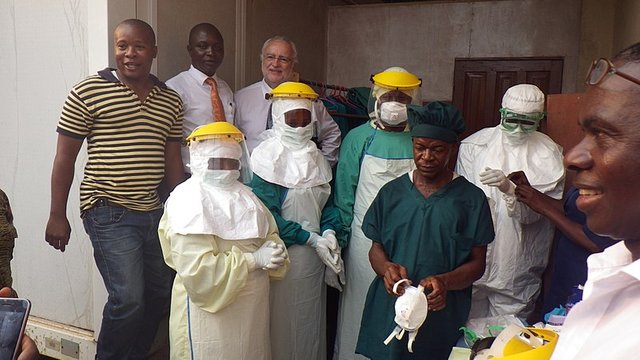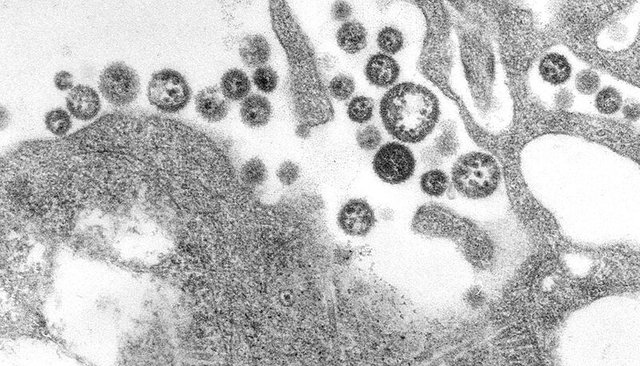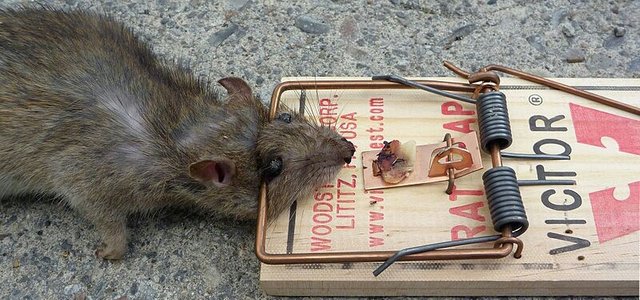Lassa Fever outbreak: a wake-up call for Health workers in Nigerian Hospitals
The death of Dr. Jide Adeoye (not real name) is still fresh in my memory, though its been 4 years since he left this world, his diligence to work, humbleness and cheerfulness to his patient as well as other members of staff is what makes his death a great loss to me. If he had died a natural death, probably I wouln't be so worried as I am today, but because he died as a result of our negligence as health workers, he met his death untimely.
Though, I will not want to raise issues that have caused a lot of unrest concerning his death; but it is clear that he died as a result of someone's negligence to duty. Yes, Dr. Adeoye died from illnesses that emerged from the deadly disease called Lassa fever which he contracted from a patient on admission within the hospital. The uproar within and outside the hospital hub on whose negligence led to his death was too critical and sensitive to mention here.

Health workers at a training on lassa fever FROM wikipedia commons CC BY SA 3.0
Trust "Nigerians", what emerged after his death was to put the blame on someone
The victim's families blamed the hospital management for their insensitivenes and poor working conditions provided, the management blamed the Government for not providing the necessary infrastructures and for poor funding the hospital while the Government blamed the Doctors and other health workers in the hospital (including the victim anyway) for their negligence and unprofessionalism at work.
Today, i am not willing to discuss how the matter was resolved but to pass across salient points to health workers and my readers due to the prevalence and re-occurrence of this dealdly disease. For you to take this serious, let me brief you on recent statistics about its outbreak. In Nigeria, the outbreak of lassa fever is not new to us over the years, but 2018 has been the worst in the country with different outbreaks recorded in 21 out of 36 states.
The World Health Organisation WHO and the Nigerian Centre for Diseases Control NCDC revealed a total of 1849 suspected lassa fever cases from January 1 till April 15, 2018. From these suspected cases, 413 cases were confirmed; and from these confirmed cases, 114 deaths were reported.
Also, from January 1 till April 15, 2018; 27 health workers from 7 states were confirmed infected with lassa fever and of the 27 confirmed cases, 8 of them led to death. However, all of these health workers contracted the disease from patients admitted in their respective hospitals source.
-1.jpg)
Doctor attending to a Patient without hand gloves Public domain: Pixabay
From these statistics, it is certain that health workers have also been victims of this deadly disease and is becoming too pronounced. Now, let me inform you that Lassa fever is not a new disease; though was first mentioned in 1950, it was majorly described in 1969 when 2 missionaries died from the disease in Nigeria after attending to an infected patient source Ever since then, infection has been difficult to detect until the emergence of symptoms.
What exactly is Lassa fever?
Lassa fever is an acute viral hemorrhagic illness that affects the blood, liver and other parts of the human body. It is caused by Lassa fever virus that is carried mostly by multimammate rats (rats that have many breasts) named ‘mastomys natallensis’. The disease occurs throughout the year but it is most common during dry seasons. For more understanding on this subject matter, let me define some medical terms affiliated with lassa fever.
Standard case definitions of Lassa fever
Suspected case of Lassa fever
Illness with gradual onset of one or more of the following: malaise, fever, headache, sore throat, cough, nausea, vomiting, diarrhea, myalgia, chest pain, hearing loss and a history of contact with excreta of rats or with a case of Lassa fever sourceConfirmed case of Lassa fever
A suspected case that is laboratory confirmed (positive IgM antibody, PCR or virus isolation) or epidemiologically linked to a Laboratory confirmed case source
How is Lassa fever transmitted?
Lassa fever is spread through:
● Eating food or drinking water contaminated with urine, faeces, saliva, or blood of rats.
●Direct contact with urine, faeces, saliva or blood of rats.
●Touching of floors, beddings and households materials contaminated with urine, faeces, saliva of blood of rats or an infected person.
●Inhalation of air contaminated with urine, faeces, saliva or blood of rats or an infected person.
●Person-to-person through contact with blood, urine, saliva, through contact with blood, urine, saliva, throat secretion or semen of an infected person.

Multimammate rat Public domain: Pixabay
Who is at risk of contracting Lassa fever?
■ People of all age groups who come in contact with the urine, faeces, saliva or blood of rats or an infected persons.
■ People living in dirty environments.
■ Family members who are taking care of persons infected with Lassa fever.
■ Health workers, including Doctors, nurses, or other health workers providing direct patient care.
■ Hospital staff who clean and disinfect contaminated surfaces, materials and supplies.
■ Laboratory staff who handle blood samples from suspected Lassa fever cases.
■ Medical or support staff who prepare or handle dead bodies of Lassa fever patients.
What is the incubation period?
Signs and symptoms of fever appear 6 to 21 days after contact with the Lassa fever virus.
What are the signs and symptoms?
About 80% of infected individuals shows no symptoms untill the virus has affected the sensitive parts/organs of the body such as the liver, heart, kidney etc. The disease usually starts with fever and general body weakness and eventually leads to signs and symptoms such as high fever (38.5oC or above), sore throat, vomiting, diarrhea, back pain, cough, chest pain, stomach pain, restlessness, swelling of the face, bleeding through body openings (nose, ears, eyes, mouth etc).
What are the common complications of Lassa fever
Complications include hearing loss, deafness, infection/inflammation of the brain, seizures, spontaneous abortion, pleural effusion, low blood pressure etc
-1.png)
Brain inflammation Public domain: Pixabay
Is there a treatment for Lassa fever?
Yes. Lassa fever can be treated using Ribavirin in the first week of the diseases. But there is no vaccine yet against Lassa fever.
How can I prevent the spread of Lassa fever in the hospital?
To prevent the spread of Lassa fever in the hospital:
Isolate all suspected cases of Lassa fever and contact the appropriate authorities (Local Government Disease Surveillance and Notification Officer (DSNO) or State Epidemiologist).
Do the following while caring for Lassa fever patients:
● Limit the number of health facility staff and visitors in the patient’s room
● Ensure proper wearing and removal of full personal protective equipment (face masks, hand gloves, gowns and goggles) before and after entering the patient’s room.
● Wash hands with soap under running water always.
● Limit invasive procedures and use of injectable medications.
● Proper disinfection of items used by Lassa fever patients such as thermometers, syringes, beddings, clothing, cups, plates, spoons etc.
● Observe safe disposal of injectables and other sharp items.
● Observe safe burial practices
What you should do as a Health worker if the following occur:
a. If a single case is suspected
■Report case-bound information immediately to the appropriate quarters such as the Local Government Disease Surveillance and Notification officers, State Epidemiologists, or call the Nigerian Centre for Disease Control (NCDC).
■Suspected cases should be isolated from other patients and strict barrier nursing techniques implemented.
■Standard infection control precautions should be enhanced throughout the healthcare setting.
■ Collect specimen to confirm the case(s).
■ Treat and manage the patient with supportive care.
■ Conduct case-contact follow-up and active case search for additional cases.

Lassa virus as viewed under the Transmission Electron Micrograph Wikipedia commons CC BY SA 3.0
b. If a single case is confirmed:
■ Maintain strict Viral Hemorrhagic Fever (VHF) infection control practices throughout the outbreak.
■ Mobilize the community for early detection and care and conduct community education about how the disease is transmitted and how to implement infection control in a home care setting.
■ Conduct active searches for additional cases.
■ Request additional help from other levels as needed.
■ Establish an isolation ward to handle additional cases that may come to the health centre.
What should I tell the public to do to prevent the spread of Lassa fever?
- Seek the right informational about Lassa fever from credible sources such as the ministry of health.
- Inform community members on the need to:
▪ Kill all rats around the houses
▪ Avoid contact with rats (dead or alive)
▪ Avoid removing dead rats from the surrounding with bare hands.
▪Keep the house and surrounding clean always
▪ Block all holes around the houses
▪ Clear all bushes around the surrounding
▪ Dispose refuse into covered dustbins
▪ Set traps for rats around the house
▪ Keep cats at home
▪ Carry out periodic fumigation of the surroundings
▪ Store food items in rat-proof covered containers
▪Cover all cooked food and water to prevent contamination by urine, faeces, saliva or blood of rats
▪ Avoid using rats as a food source
▪ Wash fruits and vegetables with clean water before eating.
▪ Avoid spreading food items along roadsides and open spaces
▪ Discard all foods (cooked or raw) partly eaten by rats or other animals.

Elimination of rats using rat trap Wikipedia commons CC BY SA 3.0
Thank you for Reading
All Images Used In This Article, Are Linked To The Respective Owners

| REFERENCES FOR FURTHER READING |
World Health Organisation: Fact sheet on lassa fever http://www.who.int/news-room/fact-sheets/detail/lassa-fever
World Health Organisation: Lassa fever in Nigeria http://www.who.int/csr/don/20-april-2018-lassa-fever-nigeria/en/
Centre for Diseases Control: Epidemiological report, week 32. Preparedness for outbreaks and public health events in Nigeria https://ncdc.gov.ng/reports/weekly
Medicinenet: Lassa fever https://www.medicinenet.com/lassa_fever/article.htm#what_is_the_history_of_lassa_fever
Relieveweb International Report on Lassa fever in Nigeria https://reliefweb.int/report/nigeria/lassa-fever-nigeria-1
Nigerian Galleria Community Health: Report on lassa fever https://www.nigeriagalleria.com/Community-Health/Lassa-Fever.html

If you write STEM (Science, Technology, Engineering, and Mathematics) related posts, consider joining #steemSTEM on discord here. If you are from Nigeria, you may want to include the #stemng tag in your post. You can visit this blog by @stemng for more details. You can also check this blog post by @steemstem here and this guidelines here for help on how to be a member of @steemstem. Please also check this blog post from @steemstem on proper use of images devoid of copyright issues.


You have a minor misspelling in the following sentence:
It should be until instead of untill.Nigera we love you! from Pakistan!
Ohhh... thanks friend...
How is Pakistan?
Its good , now here everything is save , We fenced the western border with afghanistan.
Lassa fever killed a young intern that I know of; I think she made a mistake of handling an infected patient without wearing her gloves.
My God; a student doing her internship??? That's unfortunate ... this is why we need to do more than what is being currently done in our hospitals...
Yes, a trained doctor running the usual one year hospital training.
This post has been voted on by the steemstem curation team and voting trail.
There is more to SteemSTEM than just writing posts, check here for some more tips on being a community member. You can also join our discord here to get to know the rest of the community!
Hi @teemike!
Your post was upvoted by utopian.io in cooperation with steemstem - supporting knowledge, innovation and technological advancement on the Steem Blockchain.
Contribute to Open Source with utopian.io
Learn how to contribute on our website and join the new open source economy.
Want to chat? Join the Utopian Community on Discord https://discord.gg/h52nFrV
This very special educative and really a wake up call for all health care providers. Well written, thumbs up
Thank you friend